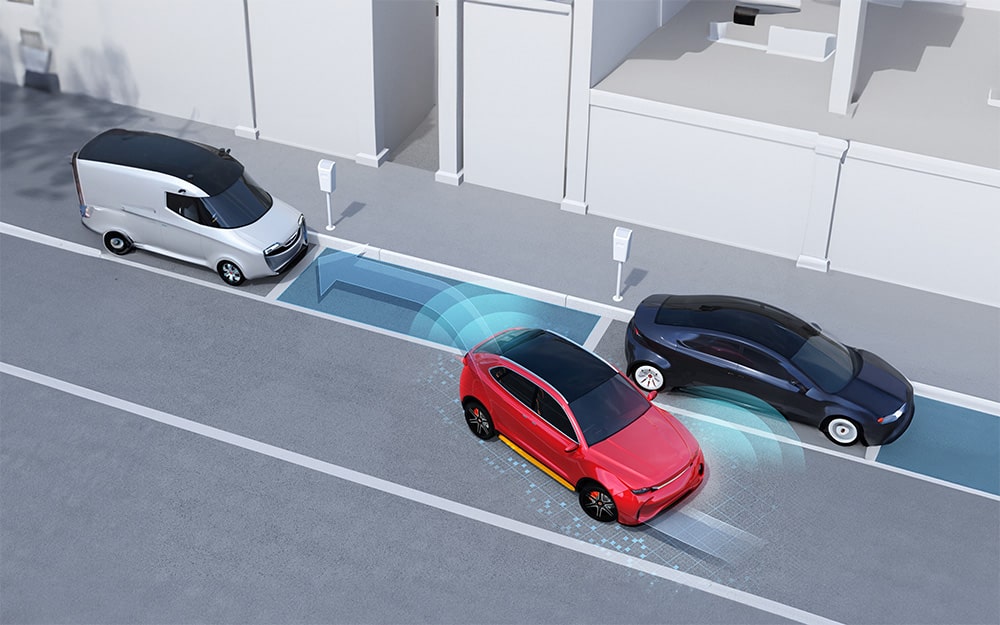Home » Innovation & Technology » The Parking Revolution
Innovation & Technology
The Parking Revolution
stock.adobe.com / chesky
A Future Where Technology Takes Charge
Imagine a world where parking your vehicle is effortless, a place where you no longer worry about finding a spot or adhering to parking regulations. This utopian vision, akin to Sir Thomas More’s dreams, is closer to reality than we might think. While complete automation might seem like a distant goal, we are making significant strides toward a future where technology shoulders the burden of parking, making it a seamless, stress-free experience for drivers. In this article, we explore the path to fully automated parking and the key factors driving this revolution.
The Quest for Convenience
At the heart of automated parking lies the concept of convenience. Convenience in parking translates to minimal mental strain, reduced effort, and increased accessibility. It means eliminating the need for exhaustive searches, complex maneuvers, and the accompanying headaches. The goal is to relieve parkers of the cognitive load associated with parking, making the experience not just efficient, but genuinely enjoyable.
At its core, convenience is a holistic experience. It’s the elimination of exhaustive searches, the abandonment of complex maneuvers, and the eradication of the headaches that have long been synonymous with parking. The convenience we seek isn’t merely a matter of proximity; it’s the marriage of accessibility and effortlessness, where the perfect parking spot seamlessly aligns with your destination, erasing the need for ponderous decisions or frustrating detours. It’s the fusion of technology and human intuition, crafting a parking experience where every movement is intuitive, every decision is swift, and every parking endeavor is met with a genuine sense of satisfaction.
Automation: The Crux of the Matter
Automation stands at the forefront of the quest for a parking utopia, serving as the linchpin that could revolutionize our daily experiences. Through cutting-edge technology, we find ourselves on the brink of a transformative era, where the complexities of parking are unraveling before our eyes. It’s not merely about the act of parking; it signifies a paradigm shift in our approach to urban mobility. By seamlessly integrating automation into our parking infrastructure, we are not just reducing the mental strain associated with finding a parking spot but also redefining the very essence of convenience. This technological leap is akin to a symphony of innovation, orchestrating a future where the hassles of parking become a relic of the past.
While the complete automation of parking might not yet be an immediate reality, the strides made in this direction are nothing short of awe-inspiring. The promise of automation extends beyond mere convenience. It embodies a future where technology becomes our trusted ally, ensuring that every parking experience is not just effortless but also eco-friendly and time efficient. Imagine a world where your vehicle seamlessly navigates to an available spot, all while adhering to traffic regulations with impeccable precision. This vision, though on the horizon, is steadily inching closer, propelled by the relentless pursuit of technological advancement.
What makes this progress so promising is its potential to reshape our cities fundamentally. Automated parking isn’t merely a luxury; it’s a necessity in our ever-expanding urban landscapes. The reduction of congestion, the optimization of parking spaces, and the mitigation of environmental impact are all embedded within the core of this technological evolution. It’s not just about making our lives easier; it’s about forging a sustainable future where our cities breathe, unburdened by the weight of inefficient parking practices.
Are We There Yet?
The question of how close we are to an automated parking experience yields a complex answer. For the optimistic proponents of technology, the prospect of automated parking appears tantalizingly close. Yet, despite the palpable excitement, this futuristic reality remains just beyond our immediate grasp, lingering on the edges of our collective imagination.
The advancement of autonomous vehicles, a realm dominated by trailblazing companies such as Waymo and Cruise, undeniably marks a pivotal leap forward in our pursuit of automated parking ecosystem. Witnessing these sophisticated autonomous vehicles navigate our streets with a level of precision once thought implausible is undeniably awe-inspiring. However, these vehicles represent only a fragment of the intricate puzzle. Creating a fully automated parking system necessitates the harmonious integration of numerous diverse elements, each requiring meticulous digitization and seamless synchronization.
One such indispensable component in this mosaic is the curb, a space once overlooked but now burgeoning with innovation. Here, at the nexus of the physical and digital realms, revolutionary solutions are rapidly emerging, obliterating the technological constraints that previously hindered progress. The curb, once a symbol of parking challenges, has become a testing ground for inventive minds. By transforming this ordinary space into a hub of innovation, we are dismantling the barriers that once confined our automated parking dreams.
The Human Element: Willingness to
Share Data
In the quest for automated parking, user participation is paramount. Specifically, the willingness of users to share their data among different technologies is a crucial factor. In this multifaceted journey towards automated parking, the willingness of users to participate by sharing their data among an array of interconnected technologies stands as a linchpin, driving the gears of progress.
Looking beyond the realm of parking, numerous sectors have seamlessly integrated automated digital experiences into their core functionalities. Banking, shopping, healthcare—these industries have all embraced the transformative power of data sharing. The common thread weaving through these diverse sectors is the effortless flow of information between intricate systems, a phenomenon that has not only streamlined operations but has also enhanced user experiences immeasurably. In the context of parking, this seamless exchange of data between systems is not merely a luxury but a fundamental requirement, an indispensable bridge that connects the various components of automated parking into a cohesive whole. Without this fluid transfer of information, the vision of complete automation remains out of reach. The reluctance to share data, driven by concerns around privacy and security, has been a stumbling block. However, as technological safeguards evolve and users become more cognizant of the benefits, this reluctance is gradually transforming into acceptance.
Willingness to share data not only propels us closer to automated parking but also fosters a sense of community in the digital realm. It represents a collective acknowledgment that our individual contributions, in the form of shared data, pave the way for a future where the complexities of parking are simplified, making urban mobility a seamless and harmonious experience. In this participatory digital ecosystem, users are not just passive beneficiaries but active architects, shaping the contours of a future where automated parking is not just a convenience but an integral part of our everyday lives.
Conclusion
While fully automated parking might not be an immediate reality, we are undeniably on the path toward this transformative future. The convergence of advanced technology, the digitization of crucial elements like curbs, and the willingness of users to embrace data sharing are driving forces behind this revolution. As these pieces fall into place, the vision of a world where technology effortlessly handles all aspects of parking is no longer a mere fantasy but a tantalizing glimpse into our future. ◆
Sonny Samra s a revenue, strategy, and partnerships leader in the parking and mobility space and a member of the IPMI Technology Committee.

-
Sonny Samrahttps://parking-mobility-magazine.org/author/sonny-samra/April 3, 2024


Seven-Generation Decision-Making
A major factor of sustainability is thinking about how we

The Digital Tsunami is Here
How Data Standards are Shaping the Future of an Interconnected







